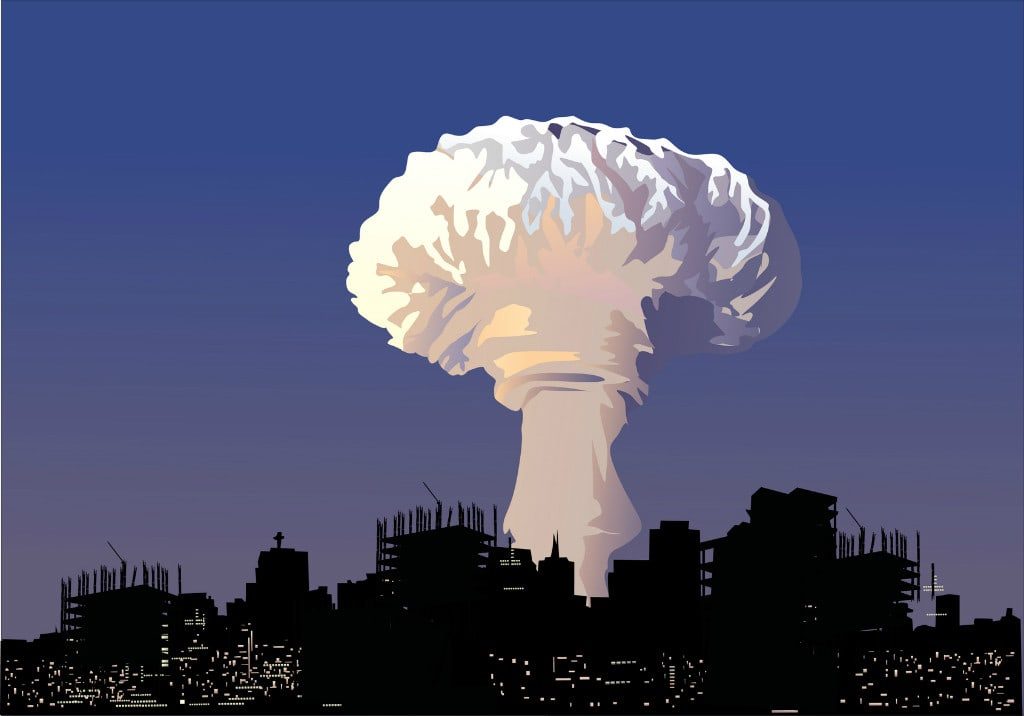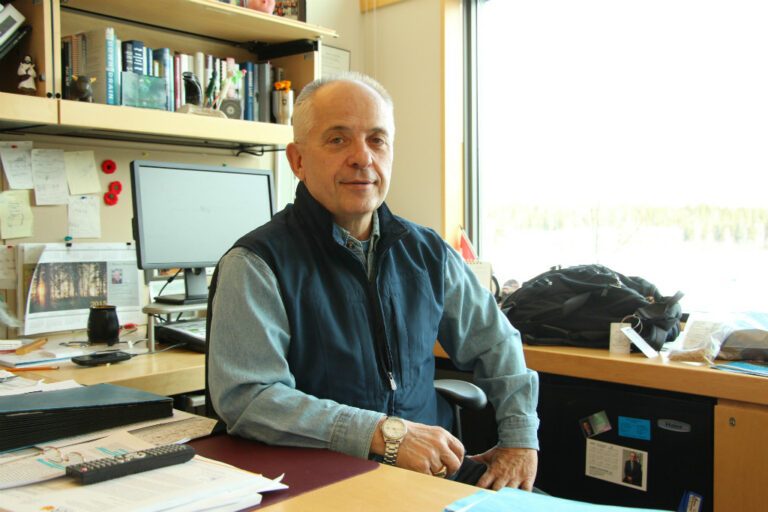In the great morel stampede about to roll across the burn scars from last year’s record forest fire season, the roar of commerce has shouted down science and common sense.
The upcoming harvest of the rare and highly-valued fungus is expected to bring in millions of dollars, and the GNWT is taking no chances with the one upside to losing millions of hectares of forest.
So the warning that wind-borne arsenic trioxide has dangerously contaminated everything within 50 km of the former Giant and Con mines has become the defining criteria for the morel harvest – despite scientific studies that say it’s nonsense.
Questioned about the declared 50-km circle of death, Drew Williams, manager of public affairs for Industry, Trade and Tourism, told Edge in an email that the morel market, is “very finicky, paying top dollar, so they expect the very best.
“If we had a batch of morels show up at a shipping dock for testing and results came back showing elevated levels of heavy metals and contaminants, the batch would be rejected as well as likely other batches from the NWT.
“Buyers would probably avoid the NWT in the future for fear of contaminated mushrooms. Buyers bear all the risks here. The whiff of concern only adds to risk. Our aim was to eliminate, or reduce the risk,” Williams wrote.
Ignoring decades of research
In adopting the 50-km limit, the GNWT relied on Joachim Obst, a self-described naturalist whose sole published work appears to be a guide for would-be morel harvesters, and ignored findings of scientists who have been assessing the impacts from Yellowknife’s gold mines for almost 40 years.
A research team from the University of Alberta and the Northern Forest Research Centre published a report in 1978 in the APCA Journal that attributed visible damage to vegetation around Yellowknife to sulfur dioxide that continued to spew into the atmosphere after the mines reduced arsenic trioxide emissions.
The scientists said the “severe degradation” of vegetation and “massive” arsenic contamination found within a kilometer of the mines diminished rapidly as the distance from the mines increased.
At two and four km distance, “there is mild disturbance to vegetation” and at 12 and 14 kilometers, “vegetation appears normal,” they reported.
They did not look at mushrooms or edible berries, but a research team led by Ken Reimer undertook that study in 2012.
Reimer, professor emeritus at Royal Military College in Kingston, has been conducting research on the impact of Giant and Con mines for decades. The GNWT is familiar with his work and Williams included a link to a 2002 news story on Reimer’s previous findings.
Working with colleagues Irish Koch and Michelle Nearing, Reimer examined edible and non-edible mushrooms, Labrador tea, horsetails, buffaloberry, fireweed and (edible) berries from contaminated and uncontaminated locations.
The 2012 team conducted tests on-site – with a hand-held field portable x-ray fluorescence instrument – and off-site – with “a combination of high-performance liquid chromatography, inductively coupled plasma mass spectrometry and x-ray absorption spectroscopy. Microbial distributions in soil samples will be determined by DNA analysis to allow for comparisons between contaminated and uncontaminated sites, and soils hosting mushrooms and/or plants that contain non-toxic arsenic and those that do not.”
In short, the research team left no stone unturned in the search for arsenic in plants and mushrooms. Their conclusion: it’s all good, if consumed in moderation.
“The only mushrooms I would not eat are those that grow on mine waste,” Dr. Reimer told Edge.
One of Reimer’s earlier studies found that garden vegetables in Yellowknife have 10 times more arsenic than those in the supermarket, but he pronounced home-grown produce safe to eat, effectively blessing efforts to expand the city’s community gardens.
The reason for the clean bill of health is that garden vegetables contain only a small amount of non-toxic arsenic. They do not concentrate the dangerous in-organic arsenic. “Mushrooms behave the same way,” said Reimer. “They are not arsenic sponges.”
Why such a heavy-handed warning?
With a wealth of information on arsenic contamination available from credible sources, why did the territorial government issue a warning that condemns not just mushrooms but garden produce grown and harvested in Yellowknife?
“We wanted to demonstrate some discipline to buyers who may have concerns about arsenic without knowing where Yellowknife is,” Williams said in his email to Edge.
“So the 50 km. radius was established. Buyers know harvesters have been warned, so buyers should have a degree of confidence that notwithstanding all the noise of arsenic the morels they are purchasing shouldn’t have any discernible levels of arsenic.
“In terms of consumption within the zone, like everything else there always exists a risk.
“Concentrations of arsenic are known to exist around Yellowknife along with other heavy metals. Depending where one sits on the food safety scale (1 – you don’t care/10 – eliminate all possible contaminants) the response differs considerably.
“With respect, there is one camp which believes there are no safe levels of mine generated arsenic or heavy metals in the food chain. In principle I agree we shouldn’t be eating or feeding our families with food that has been contaminated.
“Then there is another camp which speaks to moderation. The amount of mushrooms one needs to consume to elevate the risk on yourself would likely be more than one would typically, possibly consume.
“In sum, you can’t be fair in providing public information on mushrooms in Yellowknife without the issue being raised.
“It’s been a regular story for years.
“So if we don’t speak to it as we did with the 50 km. radius, I would think the risk of failure of this opportunity would be significant given the level of attention that has been on the issue.
“If ITI’s intended precautions amount to “over hype”, I think you can credit your media colleagues (not unlike your own “death zone” terminology). For our purposes, however, it all adds up to an increased awareness to safe harvesting which is our key objective.”
What it really comes down to is the government’s willingness to give the unsubstantiated opinion of an amateur equal weight with information gathered and analyzed by trained scientists and subjected to peer review. Anything for a buck, it would appear.
And will ITI now warn the Yellowknife Community Garden Collective against consuming their home-grown produce? After all, the plots are much closer to the former arsenic trioxide source than any morel patch, and were only given a pass by scientific analysis – not the department’s “experts.”
UPDATE: We received this note from Ken Reimer on May 6, 2015:
I have read your articles on the mushroom situation with interest. They are very well written and you have cited our work correctly –with one exception. You indicate that vegetables contain the less toxic organic arsenic as opposed to the toxic inorganic forms. This is not the case. Plants mainly contain the inorganic form as well as some of the organic arsenic; therefore it is the total amount of inorganic arsenic that is critical. Even though the vegetables we studied in YK had more arsenic than the grocery store varieties we determined that it was not enough to pose a significant risk. You are correct in saying that neither plants or mushrooms suck up contaminants from the soil in large amounts. Some mushrooms, but not morels, have the ability to selectively accumulate only the non-toxic organic arsenic compound.







